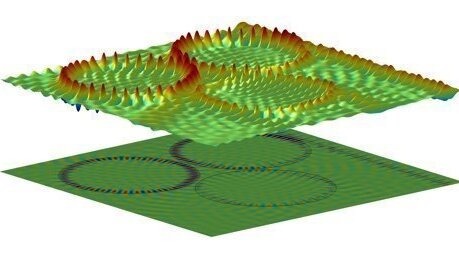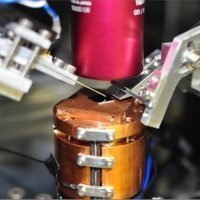
Setup for the coupling of the fiber taper to the microdisk resonators which are operated at stabilized temperature.
Image: IAP (University Jena)Optical microresonators such as microspheres, microdisks or microrings have attracted an immense interest in the optics community. This interest is stipulated, first, by potential application of such structures in the next generation of opto-electronic devices such as add-drop filters, micro lasers, wavelength converters and optical sensors. Second, optical microresonators exhibit a versatile platform for the investigation of different basic linear and nonlinear physical phenomena, appearing not only in optics, but having rather general nature. The most distinguishing feature of microresonators is that they provide extraordinarily small mode volumes and very sharp resonances, resulting in high optical Q-factors up to 1011 - which allows for thresholds of various nonlinear effects at rather low light intensities. This, in turn, opens possibilities to conveniently investigate nonlinear optical effects at power levels of the order of milliwatts, which is practically impossible with bulk optical objects.
The main goal of our activity is to investigate optical-, thermal-, and mechanical-coupling effects in arrays of microresonators, both for linear and nonlinear operation regimes. In the linear regime (very low coupled power) effects of light localization are investigated.
For example, in two-dimensional arrays of coupled microresonators light is supposed to be concentrated in some particular areas instead of being distributed homogeneously. For higher input power, the nonlinearity of the optical responses leads to processes which can be considered in the framework of spatio-temporal nonlinear dynamics in dissipative systems. Methodologically, we develop theoretical and numerical models for single and multiple microresonator systems taking into account the precise geometry of the resonators and their optical nonlinearity due to material dispersion.
A great deal of research activities is focused on the technological realization and experimental assessment of various microresonator structures, such as efficient light coupling into single and multiple resonators as well as probing techniques for the mapping of spatial light distributions. We believe that our investigations on coupled resonator dynamics may be generalized to other schemes and systems where experimental investigations are much more complicated or can not be performed at all.


